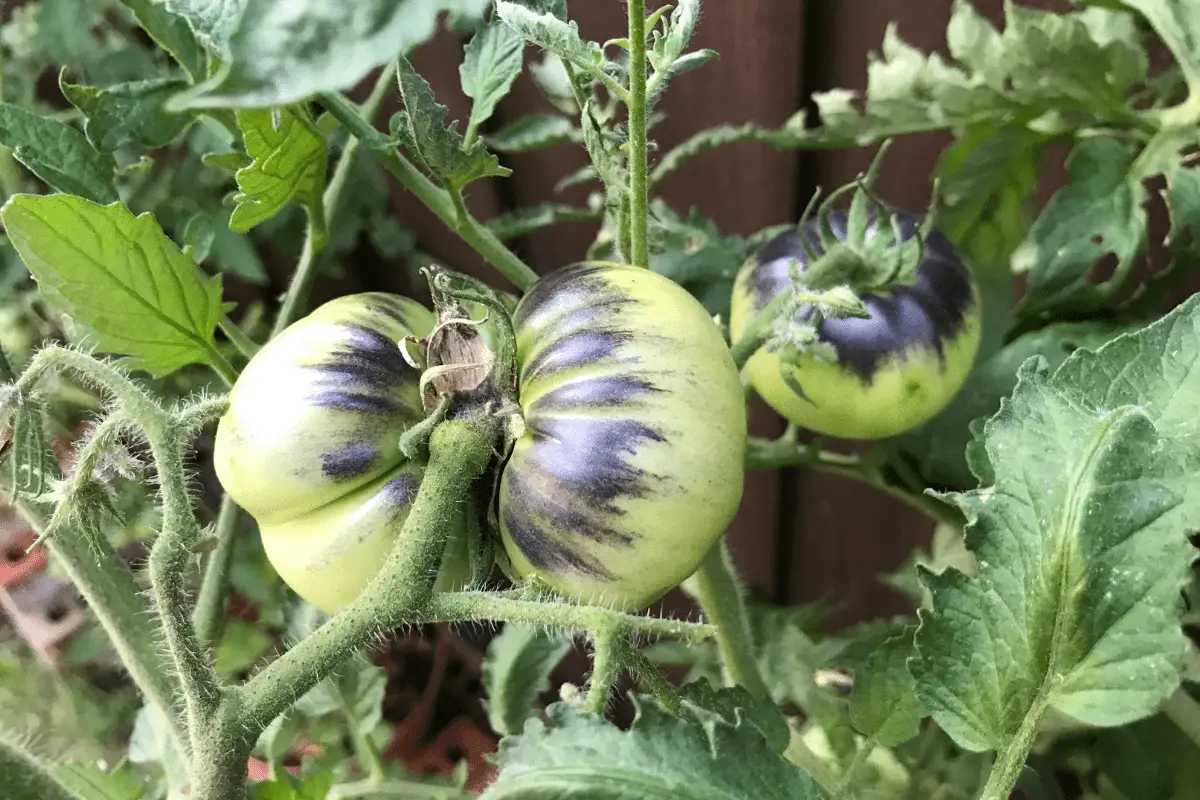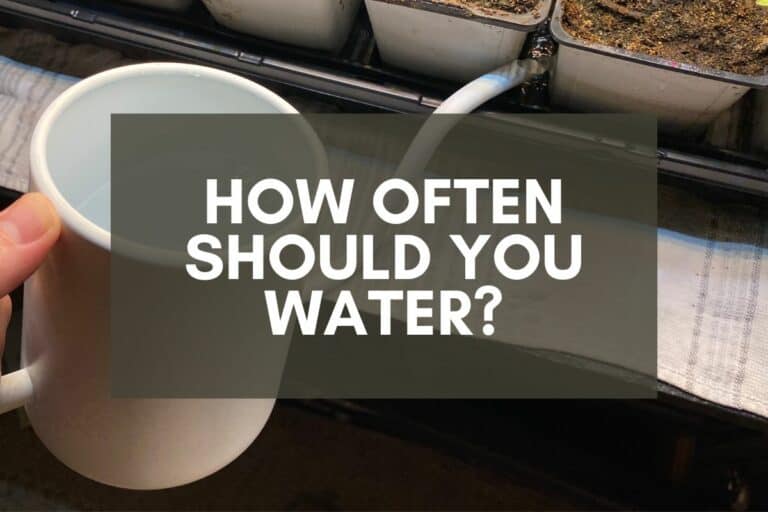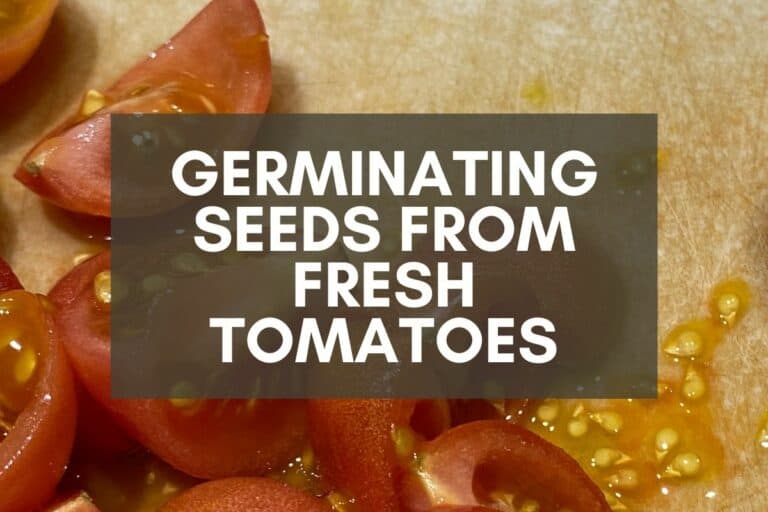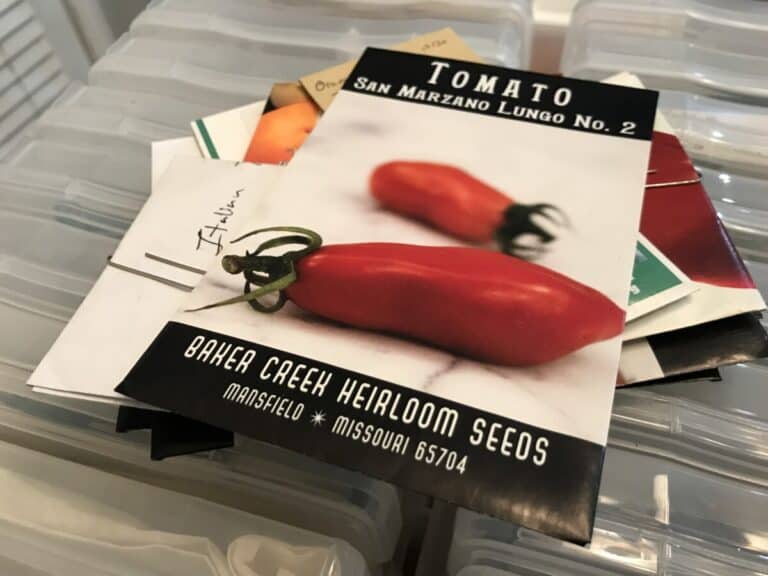Can You Use Neem Oil on Tomato Plants? 10 Reasons Why
I began gardening in 2009 back when I lived in New Jersey, and one of the things that I enjoyed most about the Garden State was growing tomatoes. The growing season was relatively short compared to North Texas (where I live now), but the climate was ideal for growing the plants I love most.
But guess who else loves tomatoes as much as I do? Bugs. Lots of bugs. And if you’re looking for ways to stop the bugs without resorting to chemical pesticides, you might have wondered: Can I use neem oil on tomato plants?
Neem oil is safe to use on all tomato varieties. It contains azadirachtin, a naturally occurring chemical that protects tomato plants against destructive pests and harmful fungi. However, care should be taken when mixing and applying neem oil since it can damage tomato plants if applied incorrectly.
I’ve had to fight off lots of garden pests over the years. In fact, I had an extreme spider mite infestation last year–which got out of hand because I was spending less time in my garden than usual due to work demands–and although I lost a few plants, I successfully fought off the spider mites using only neem oil and soapy water and ended up having an amazing harvest.
If you’d like to see what happened, you can read about my experiences and see photos in these articles:
- Can Plants Recover from Spider Mites? What You Need to Know
- Using Neem Oil to Kill Spider Mites: A Complete Guide
- Will Spider Mites Spread to Other Plants?
But in this article, my goal is simple: I plan to share my top 10 reasons why you should use neem oil on your tomato plants.
So if you’re curious about neem oil but haven’t really experimented that much with it, you’ve come to the right place!
1. Neem Oil Is a Natural Insecticide
A product derived from neem trees, neem oil contains a naturally occurring chemical compound called azadirachtin.
What I love about azadirachtin is how beneficial it is when compared with various chemical pesticides. It’s true that there are some concerns abouts it overuse–and evidence that shows that neem oil can be pretty harmful if you ingest it–but as long as you’re using neem oil in your garden and not drinking it, it’s an incredible insecticide that’s safe to use on fruits and vegetables.
Commercial pesticides like Sevin come with pre-harvest interval warnings or “PHI” warnings for short. What PHI refers to is the time that must elapse between when you apply the pesticides and when it’s safe to eat them.
In other words, you’ve sprayed your plants with chemicals, and you’ve got to wait to give the chemicals time to break down.
Neem oil doesn’t have a PHI, although I recommend waiting 1-2 days before harvesting your veggies so that the neem oil can kill off as many bad bugs as possible. However, there’s been a time or two when I needed some food from the garden asap, and in those situations, you can give your harvested veggies a thorough washing in soapy water to rinse any remaining neem oil off, and you’ll be good to go.
2. Neem Oil Is a Natural Fungicide
In general, neem oil is known to have fungicidal qualities that’ll help with various destructive fungi.
When it comes to tomato plants in particular, neem oil will help stop these common fungal diseases:
- Anthracnose
- Powdery Mildew
- Septoria Leaf Spot
- Verticillium Wilt
Unfortunately, if your plants are struggling with early or late blight, neem oil won’t be able to destroy the fungus entirely.
However, it’s theoretically possible for neem oil to kill off blight spores that it comes into contact with, assuming it does so early on. If you notice fungal problems on your tomato plants, you’ll need to apply and reapply neem oil since its chemical compounds typically degrade within 3-4 days.
3. Neem Oil Is Cost-Efficient
In my article on using neem oil to kill spider mites, I compared the price of various pre-mixed neem oil products with what you’d pay to buy a bottle of neem oil concentrate and mix your own spray.
Simply put, the results were eye-opening.
If you buy a good, pre-mixed product, you’ll pay anywhere from $.31 to $.42 per ounce of neem oil spray. These are the best pre-mixed products:
- Captain Jack’s Neem Oil Spray
- Natria Neem Oil Spray
- Safer Neem Oil Ready to Use
But if you purchase a concentrated product, some liquid emulsifier, and a spray bottle for mixing and application, you’ll end up paying only $.01 per ounce of neem oil spray.
That’s nearly 40 times less expensive than the pre-mixed sprays!
Here are the products I use. Both of them have always worked just fine for me:
- Neem Bliss
- Verdana Neem Oil

4. Neem Oil Is Easy to Mix
If you’ve never mixed your own spray, let me ease any anxieties you might have: Mixing sprays is simple if you just follow the directions.
Instead of owning 1 garden sprayer that I mix various sprays in, I’ve purchased several cheaper garden sprays, and I reserve a sprayer for each of my favorites sprays.
Mixing neem oil is as easy as following these step-by-step directions:
- Fill up your garden sprayer with as much water as you think you’ll need to complete the job.
- Determine how much neem oil you’ll need for the amount of water you’ve poured. You’ll typically include 2 tablespoons per gallon, and you can alter that ratio depending on what kind of sprayer you’re using.
- Add 1 tablespoon or liquid soap per gallon of water. Neem oil and water won’t mix unless you add a soapy emulsifier to your spray.
- Shake well, then pressurize your tank by pumping the handle up and down.
- Spray your plants thoroughly. It’s nearly impossible to use too much neem oil on your plants, so be sure to cover the undersides of the leaves since insects like to hide there. You don’t need to rinse off your plants unless you’ve accidentally sprayed neem oil in the morning or early afternoon (more on that below).
5. Neem Oil Kills Off Invasive Pests
What’s interesting about azadirachtin is its effects on garden pests, particularly soft bodied garden bugs.
Simply put, insects hate neem oil. It doesn’t merely change the taste of the plant. It also causes all kinds of biological and hormonal problems related to molting, fertility, metamorphosis, egg-laying, feeding activity, weight gain, digestion, and even wing and leg damage.
Neem oil usually takes around 3-4 days to kill most pests (although it can sometimes take longer) because it must first be ingested, then it needs time to begin wreaking havoc on bugs’ internal systems.
6. Neem Oil Doesn’t Harm Beneficial Pollinators
When I first started using neem oil in my garden, I worried that it might harm bees, butterflies, and other helpful pollinators.
But what I’ve learned since then is that neem oil doesn’t harm pollinators unless you unintentionally cover them in it.
Unlike aphids, spider mites, whiteflies, and other foliage-attacking bugs, pollinators don’t eat plant leaves or siphon off the plant’s juices. They spend their time around flowers, so they won’t ingest neem oil in the ways that other, more destructive bugs will.
7. Neem Oil Can Be Applied as a Foliar Spray
There are two ways to apply neem oil to tomato plants, but the first and most popular is doing so as a foliar spray.
But this is also particularly challenging with tomato plants for 2 reasons:
First, they have a ton of foliage, especially large, indeterminate tomato plants. And because bugs like to hide on the undersides of leaves, you’ll need to spray your plants thoroughly from all angles (and even then, you might miss some areas). For larger plants, I recommend reapplying foliar neem sprays for several weeks in a row.
Second, when tomato plants are under duress, their leaves begin to curl and dry up. This is particularly problematic if you’re fighting small pests like spider mites or aphids because those curls provide additional protection against foliar sprays.
If your plant has branches with curled, yellowing, or decaying leaves, I recommend removing all such foliage first, then spraying the plant with neem oil. Those dead leaves won’t help your plant, and they’ll simply offer further protection to the pests you’re trying to get rid of.
For additional tips, take a look at my article on how to make neem oil sprays more effective.
8. Neem Oil Can Be Applied as a Soil Drench
The idea behind soil drenches is simple: If you can get the plant to absorb neem oil through its roots and disperse it throughout the plant, you can kill bugs that might have otherwise evaded a foliar spray.
When it comes to using neem oil as a soil drench, I recommend starting off on the conversative side when it comes to mixing your neem oil.
I typically mix 2 tablespoons of neem oil per gallon of water, but the first time that I apply neem oil as a soil drench, I only mix 1 tablespoon of neem oil per gallon of water to ensure that my plants aren’t adversely affected. If they handle the first soil drench just fine, I’ll wait a week for the next application, then go back to my usual 2 tablespoons per gallon recipe.
9. Neem Oil Cakes Can Be Mixed Into the Soil
If you’ve got nematodes in your soil–or if you suspect you might have them–then neem cakes are the way to go.
Also known as roundworms, nematodes are microscopic worm-like pests that can live in the soil and seriously damage tomato plants. To kill them off, you need a soil amendment that’ll attack the nematodes where they live. This is where neem cakes come in handy.
Unlike neem oil concentrates, neem cakes have a crumbly texture and can be easily worked into soils and composts. They’ve got nitrogen, phosphorous, and potassium–usually in an NPK ratio of 6-1-2 (or something along those lines–so they’ll not only fertilize your plants. They’ll also release azadirachtin into the soil, which will help kill off damaging nematodes.
10. Neem Oil Has a Decent Shelf Life
I’ve covered this in detail in my article on how long neem oil lasts, but here’s the most important thing to remember: If stored properly, neem oil concentrates are good for at least a year (and possibly much longer).
You need to keep the neem oil in a climate-controlled space. Don’t leave neem oil in garden sheds, greenhouses, detached garages, or patio spaces because the temperature fluctuations will contribute to its degradation over time.
Instead, store your neem oil inside in a cool, dark location. I store mine in a hall closet, and it’s always ready when I need it.
Some people will tell you to store neem oil in the refrigerator, but in my experience, this is a giant, unnecessary headache. When stored in a cold space, neem oil will solidify, so if you want to use it, you’ll need to remove it from the fridge and let it sit out for 24 hours so that it’ll liquify once more.
And guess what: That’s 24 additional hours that garden pests are busy attacking your plants and reproducing.
Just store your neem oil in a dark closet, and it’ll be ready for use whenever you need it.
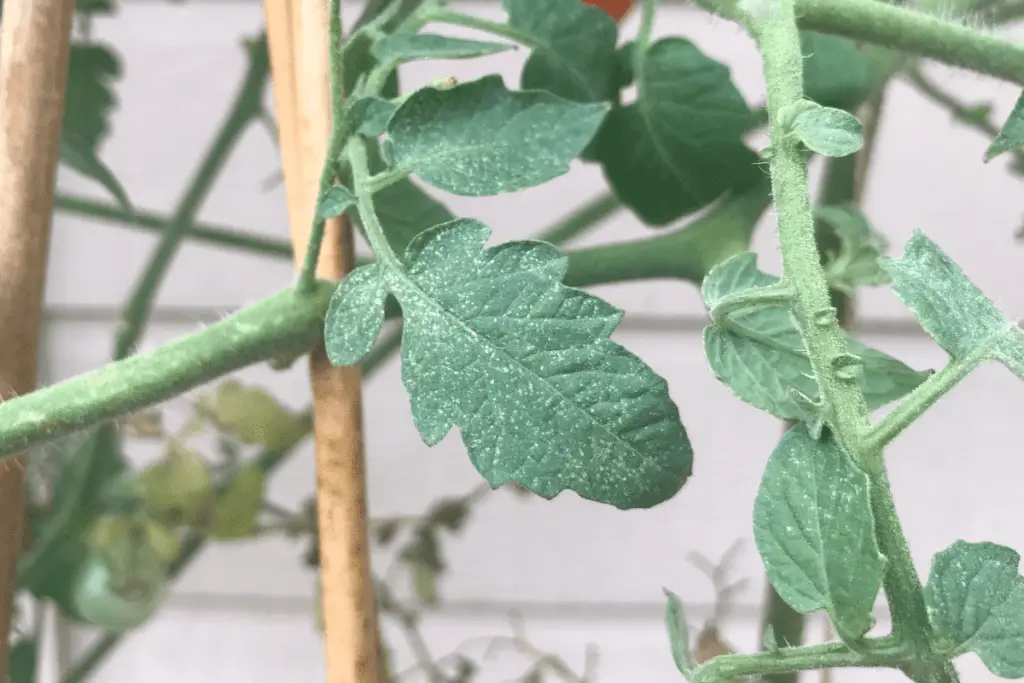
11. Neem Oil and Tomato Pests
When it comes to neem oil, you’ll want to not only learn how to use it but also the many bugs that neem oil will kill or repel.
In my personal experience, I think you’ll get some of your biggest headaches from aphids and spider mites, so here’s a few things I’d like to share about each:
Aphids
Aphids are destructive garden pests. They can’t harm humans, they don’t hurt animals, and they won’t make you sick if you accidentally eat them, but they’re incredibly annoying, and they can be surprisingly hard to get rid of if they gain a foothold in your garden.
Here’s my advice for getting rid of aphids using neem oil:
First, spray your plants thoroughly with neem oil spray, making sure to get the undersides of the leaves as well.
Second, since you’ve got to wait 4-6 days before you reapply neem oil, go out in your garden each day and blast your plants with the water hose. Don’t spray them hard enough to damage them, but you should spray hard enough to dislodge as many aphids as possible.
Once you’ve done so for several days, reapply neem oil and repeat the process until the infestation is gone. This is especially important if you see any ants crawling around your tomato plants because, if that’s the case, the ants are going to make aphids worse by tending to them and killing off predatory bugs.
No matter how large your aphid infestation is, you thankfully don’t have to worry about your soil once the season’s over. You can plant in and reuse soil where aphid-infested plants once grew, but I recommend using either a neem oil soil drench or neem cakes to ensure that you’ve killed off any aphids who managed to survive your earlier treatments.
Spider Mites
More so than aphids, spider mites are my personal nemeses. They seemingly arrive out of nowhere, they’re often hard to spot, and they damage all kinds of garden plants.
What makes things worse is how hard they are to kill. As I noted at the beginning of this article, I have a lot of experience fighting them off with neem oil and other treatment methods, so I want to share a few words of advice.
First, if you see a spider mite infestation, act immediately. Spray your plants with neem oil as soon as possible because if you can catch a spider mite infestation early on, you can stop it much easier.
Second, you will need to be extra aggressive if you see spider mites among your tomato plants. I recommend spraying neem oil every 4 days for 3-4 weeks while spraying your plants with soapy water every day in between neem oil applications.
Simply put, don’t give spider mites a single day to recover from your treatment methods. If the extremity of this approach worries you because you fear you might end up damaging your plants, I get that, but if you don’t act aggressively, the spider mites are going to destroy your tomato plants anyway, so I think it’s a risk worth taking.
Further Reading
My goal with this article is to help you grow the best tomatoes possible by using neem oil to fight off tomato-destroying bugs.
If you’d like to learn more about neem oil, I recommend taking a quick look at several articles I’ve written on important neem-related topics:
